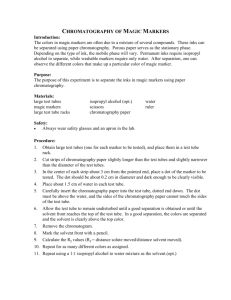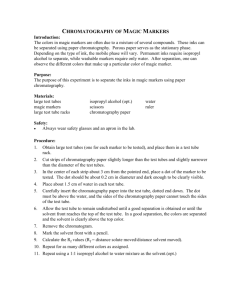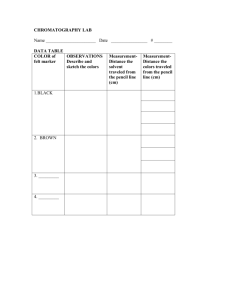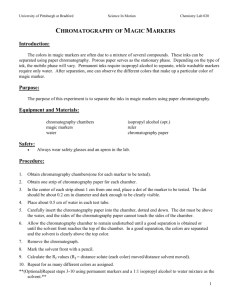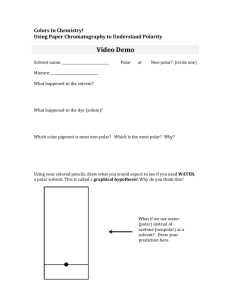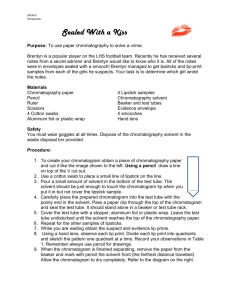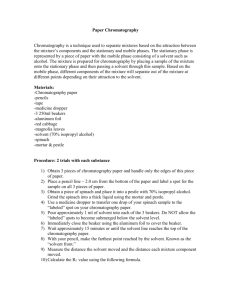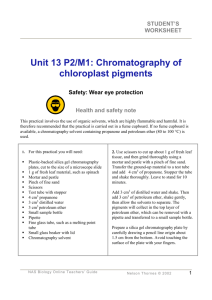Chromatography_Lab
advertisement
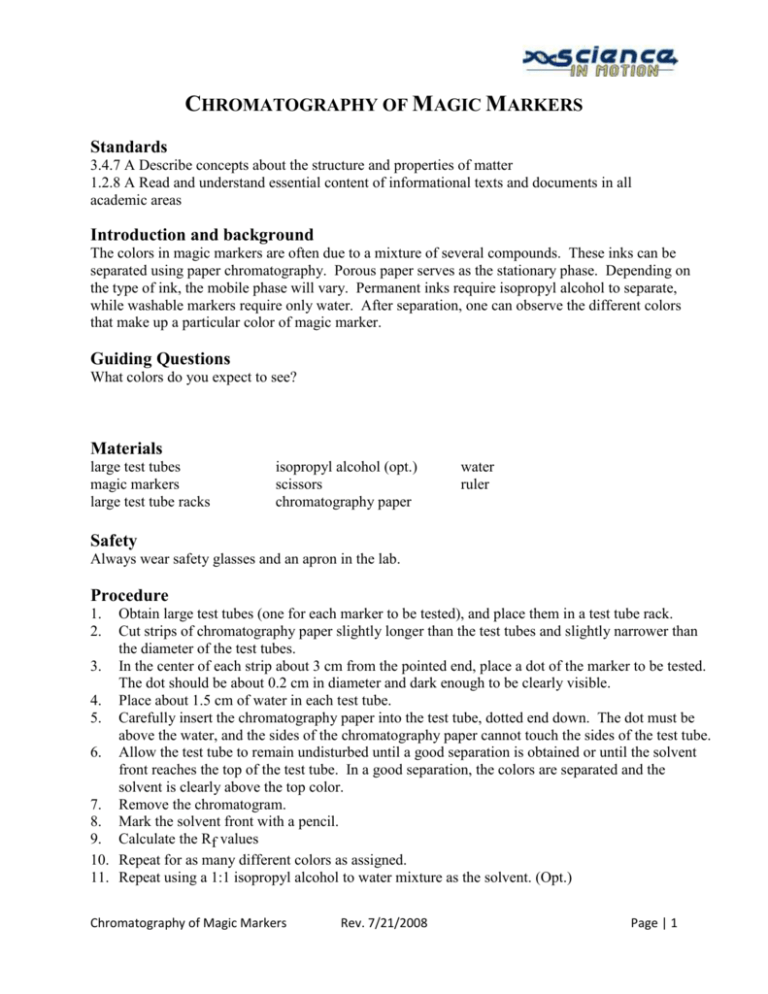
CHROMATOGRAPHY OF MAGIC MARKERS Standards 3.4.7 A Describe concepts about the structure and properties of matter 1.2.8 A Read and understand essential content of informational texts and documents in all academic areas Introduction and background The colors in magic markers are often due to a mixture of several compounds. These inks can be separated using paper chromatography. Porous paper serves as the stationary phase. Depending on the type of ink, the mobile phase will vary. Permanent inks require isopropyl alcohol to separate, while washable markers require only water. After separation, one can observe the different colors that make up a particular color of magic marker. Guiding Questions What colors do you expect to see? Materials large test tubes magic markers large test tube racks isopropyl alcohol (opt.) scissors chromatography paper water ruler Safety Always wear safety glasses and an apron in the lab. Procedure 1. 2. Obtain large test tubes (one for each marker to be tested), and place them in a test tube rack. Cut strips of chromatography paper slightly longer than the test tubes and slightly narrower than the diameter of the test tubes. 3. In the center of each strip about 3 cm from the pointed end, place a dot of the marker to be tested. The dot should be about 0.2 cm in diameter and dark enough to be clearly visible. 4. Place about 1.5 cm of water in each test tube. 5. Carefully insert the chromatography paper into the test tube, dotted end down. The dot must be above the water, and the sides of the chromatography paper cannot touch the sides of the test tube. 6. Allow the test tube to remain undisturbed until a good separation is obtained or until the solvent front reaches the top of the test tube. In a good separation, the colors are separated and the solvent is clearly above the top color. 7. Remove the chromatogram. 8. Mark the solvent front with a pencil. 9. Calculate the Rf values 10. Repeat for as many different colors as assigned. 11. Repeat using a 1:1 isopropyl alcohol to water mixture as the solvent. (Opt.) Chromatography of Magic Markers Rev. 7/21/2008 Page | 1 Juniata College Data Table Marker color and brand __________________________________________ Colors absorbed top to bottom (Solvent: water) _________________________ _________________________ _________________________ _________________________ _________________________ _________________________ Colors observed top to bottom (Solvent: alcohol) _________________________ _________________________ _________________________ _________________________ _________________________ _________________________ Calculations (Rf = distance solute moved/distance solvent moved). Questions 1. What marker colors were mixtures? 2. Why is isopropyl alcohol a better mobile phase than H2O for permanent markers? 3. Why does the spot need to be above the level of the solvent when the chromatogram is placed into the solvent? Chromatography of Magic Markers Rev. 7/21/2008 Page | 2
